In March 2016, Instagram switched its feed from chronological to using an algorithm to rank the “best” posts first.
Well, at the rate that things change in the digital marketing world, that’s like telling you a story that begins, “A long time ago, in a galaxy far, far away…”
Let’s take a closer look at how Instagram’s algorithm works now and check out some examples of the latest video best practices.
For starters, we’ll see how Instagram’s algorithm works for normal Feed posts, Stories, IGTV videos, and Reels, because Instagram seems to reward content creators who invest in creating a combination of these formats.
How Instagram’s Algorithm Works for Feed Posts
Back in June 2018, Instagram shared its six key ranking factors publicly for the first time.
And, surprisingly, this algorithm hasn’t changed dramatically since then.
Three main factors determine what users see in their Instagram Feed:
- Interest: How much Instagram predicts you’ll care about a post, with higher ranking for what matters to you as determined by past behavior on similar content (and, potentially, machine vision analyzing the actual content of the post).
- Recency: How recently the post was shared, with prioritization for timely posts over weeks-old ones.
- Relationship: How close you are to the person who shared it, with higher ranking for people you’ve interacted with a lot in the past on Instagram, such as by commenting on their posts or being tagged together in photos.
Beyond those core factors, three additional signals that influence rankings are:
- Frequency: How often you open Instagram, as it will try to show you the best posts since your last visit.
- Following: If you follow a lot of people, Instagram will be picking from a wider breadth of authors so you might see less of any specific person.
- Usage: How long you spend on Instagram determines if you’re just seeing the best posts during short sessions, or it’s digging deeper into its catalog if you spend more total time browsing.
Actually, something else has changed since June 2018.
Rachel Reichenbach, an artist and small business owner who makes cute frog characters, revealed these changes in a post on the Rainylune blog entitled, Why your Instagram Engagement Kinda Sucks Right Now.
An unnamed media expert from the Instagram Partnerships team gave her some advice on how she could grow her account – and shared “a ton of really useful information,” she said.
Ms. Reichenbach added,
“There are over 500 different factors, but it takes much more into account than just the likes, views, comments, etc. of a specific post. The algorithm ranks your specific post by taking into account your use of Instagram as a whole.”
She also noted that the algorithm takes into account and considers favorably using in-app camera and filters, geolocation tagging, messaging, and story buttons, among other factors.
That also means that you should use all of Instagram’s products – including Stories, IGTV, and Reels.
And you should use them consistently and frequently, even if this isn’t realistic or sustainable.
According to Ms. Reichenbach, Instagram’s algorithm for normal Feed posts rewards you for posting three times per week.
So, you could post on Monday, Wednesday, and Friday, or Tuesday, Thursday, and Saturday. But you should post every other day.
She recommended that marketers try to publish posts consistently at the same time each day, during your followers’ peak hours. Reichenbach notes that the Instagram algorithm prefers consistency and patterns.
To see an example of practicing what you preach, check out one of her Rainylune account on Instagram to see how consistently and frequently she posts:
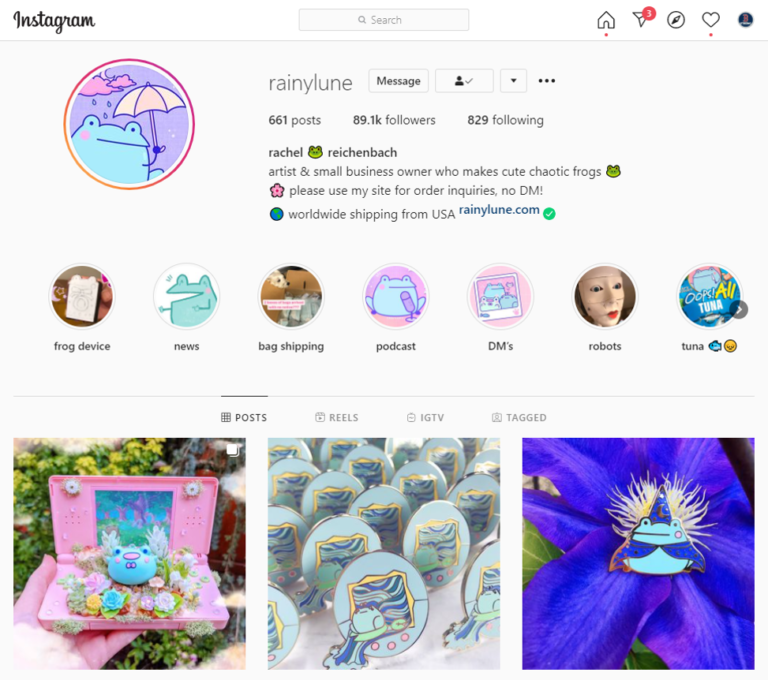
Now, take a look at Marwan Parham Al Awadhi’s DJ Bliss account on Instagram to see how consistently and frequently this Emirati disc jockey posts:
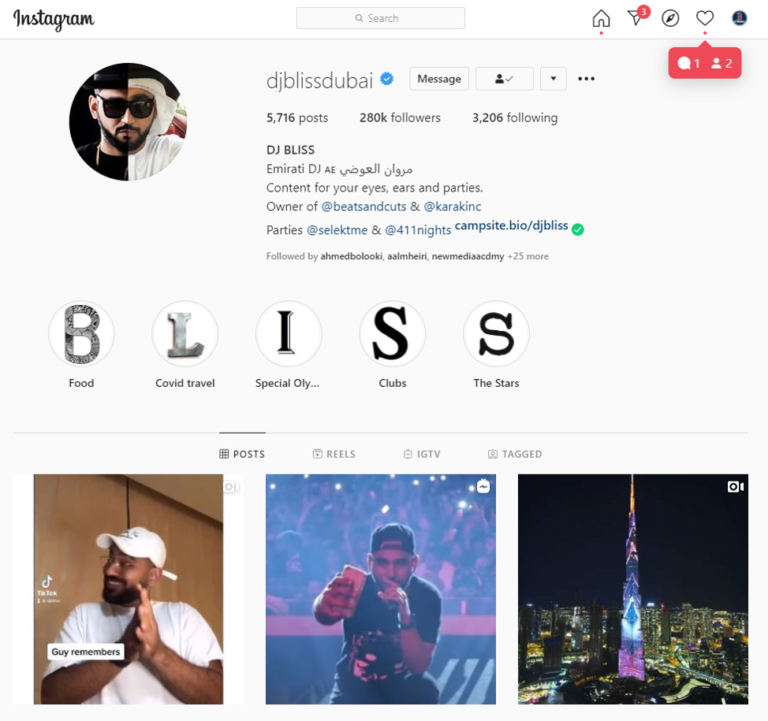
Next, analyze Nabaa Al Dabbagh’s ISpeakFootballOnly account on Instagram to see on consistently and frequently this female football (aka soccer) analyst posts:

Finally, kick the tires of Ghaith Al Falasi’s Ghaith_79 account on Instagram to see how consistently and frequently this race car driver and drift enthusiast posts:
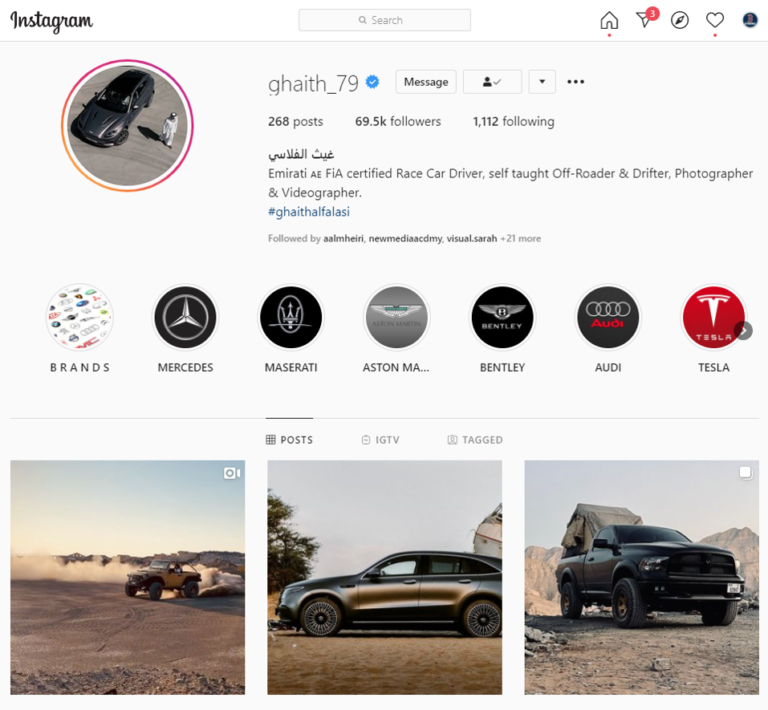
How Instagram’s Algorithm Works for Stories
Instagram Stories launched back in August 2016.
The product lets users post ephemeral photos and videos that disappear in 24-hours, just like Snapchat Stories.
In fact, Instagram’s former CEO, Kevin Systrom, openly admitted that the feature was copied from Snapchat in an effort to attract users away from the popular disappearing-message start-up.
In December 2017, Instagram introduced Stories Highlights and Stories Archive as a way to keep your stories around for more than 24 hours.
Stories Highlights appear in a new section on your profile below your bio.
According to a post by Jillian Warren, a content marketer at Later based in the UK, Instagram Stories that appear higher in your feed are those with whom you interact the most.
She adds, “The Instagram Stories algorithm also puts a lot of focus on timeliness, as it wants to make sure it’s always showing you the latest stories from your favorite accounts.”
So, it’s a good idea to post consistently and frequently to Instagram Stories.
According to Reichenbach, this should be “8-10 Stories per week, preferably 2+ per day.”
This isn’t a typo.
This explains why many Instagram influencers have started to feel like they’re working overtime for the app instead of for themselves.
And that’s why more and more Instagram influencers are turning to tools like Later to plan, optimize, and schedule their Instagram Stories.
Now, it’s possible to create 8 to 10 Stories per week or two per day, and still make them interesting and engaging. But, it isn’t easy.
So, if you want to see examples of Highlights of Instagram Stories, then check out Rainylune’s frog device:
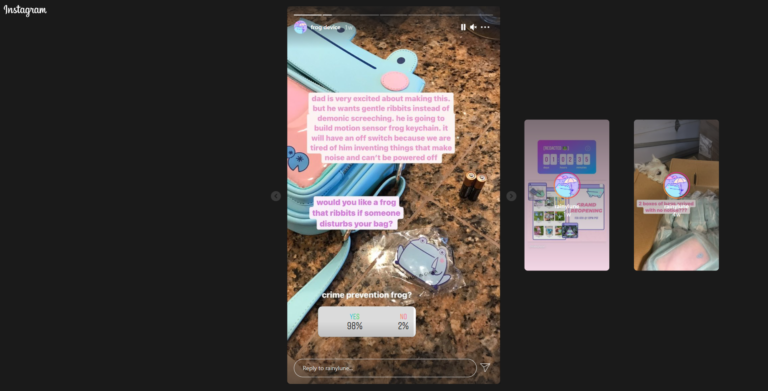
Now, take a look at some of Stories about Food from DJ Bliss:
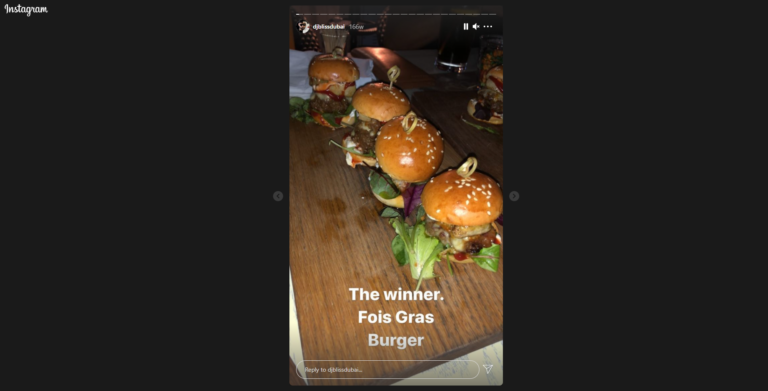
Next, analyze some of ISpeakFootballOnly’s Stories:
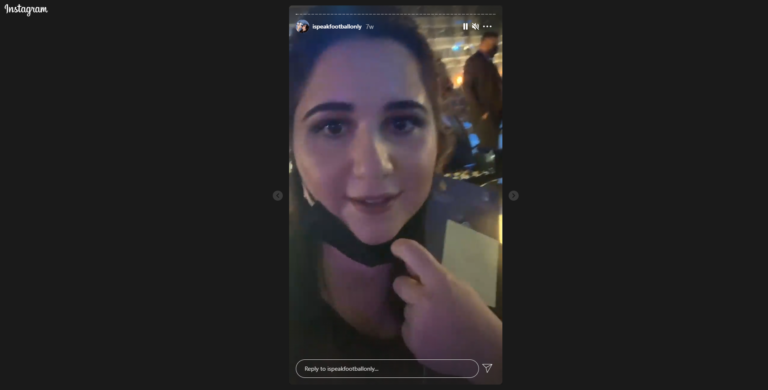
Finally, kick the tires of some of the Stories about Brands from Ghaith_79:
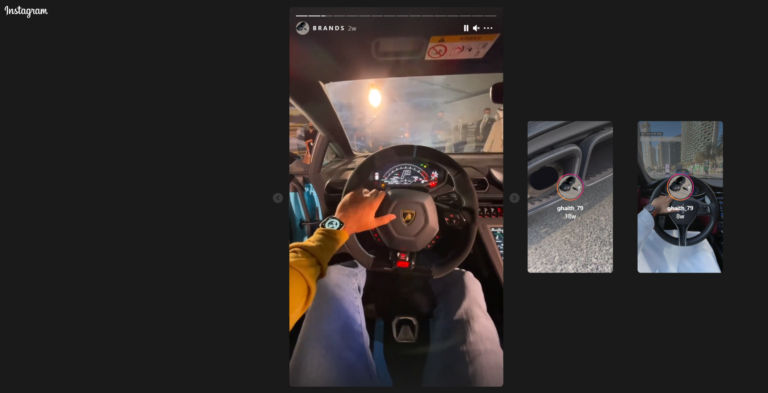
How Instagram’s Algorithm Works for IGTV Videos
Instagram launched IGTV, a video platform intended to compete against YouTube, in June 2018.
Normal users can upload videos from 1 to 15 minutes long, while creators and accounts with larger audiences can upload videos of up to one hour.
IGTV has a dedicated button in the Instagram app, in addition to a standalone app that was released the same day.
According to Fran Saraco, who posted to the Shopify blog in December 2020, the algorithm for IGTV video is similar to the algorithm for the Instagram feed.
“Instagram Stories that appear first in a user’s feed are from accounts they engage with most. Comments, likes, and DMs all count toward your place in a user’s feed. Users are also shown Stories by location, which is why using location hashtags in Stories is becoming more common,” she said.
Saraco also noted that people are more likely to see your new updates when they engage with your Stories.
And according to Ms. Reichenbach, Instagram’s algorithm rewards you for posting 1 to 3 IGTV videos a week.
Now, that can be more video than some content creators can crank out week after week.
But, that’s why Ms. Saraco recommends reposting old content to Stories.
She says, “This brings your best content back to the top, showing it to more people who may have missed it the first time around.”
However, Ms. Saraco cautions that Instagrammers should repurpose content only sparingly as you do not want users to see the same photos coming up again and again on your gallery.
Here’s an example of some of Rainylune’s IGTV videos:

Now, take a look at one of the IGTV videos from DJ Bliss:
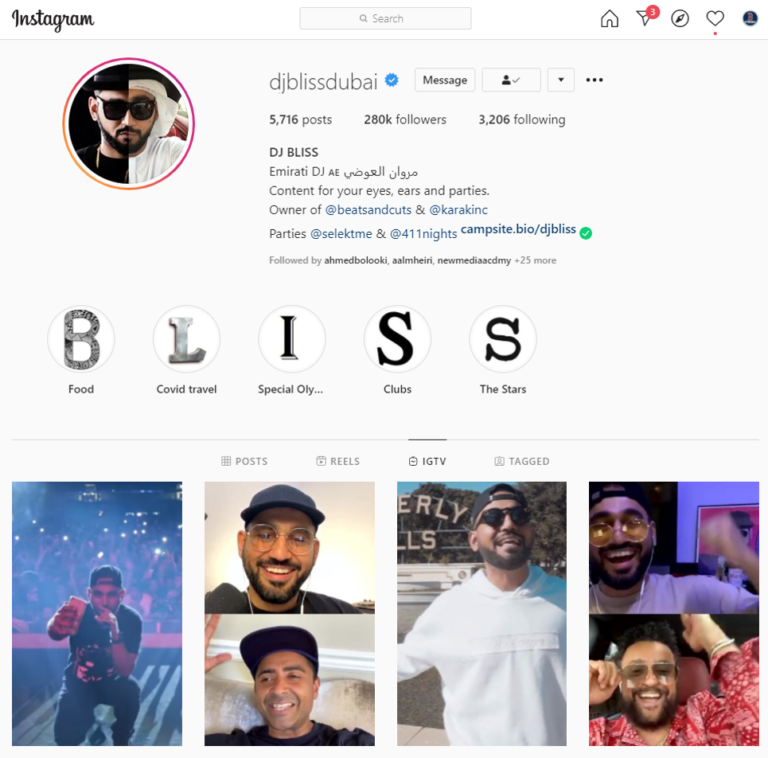
Next, analyze one of the IGTV videos from ISpeakFootballOnly:

And see also one of the IGTV videos from Ghaith_79:
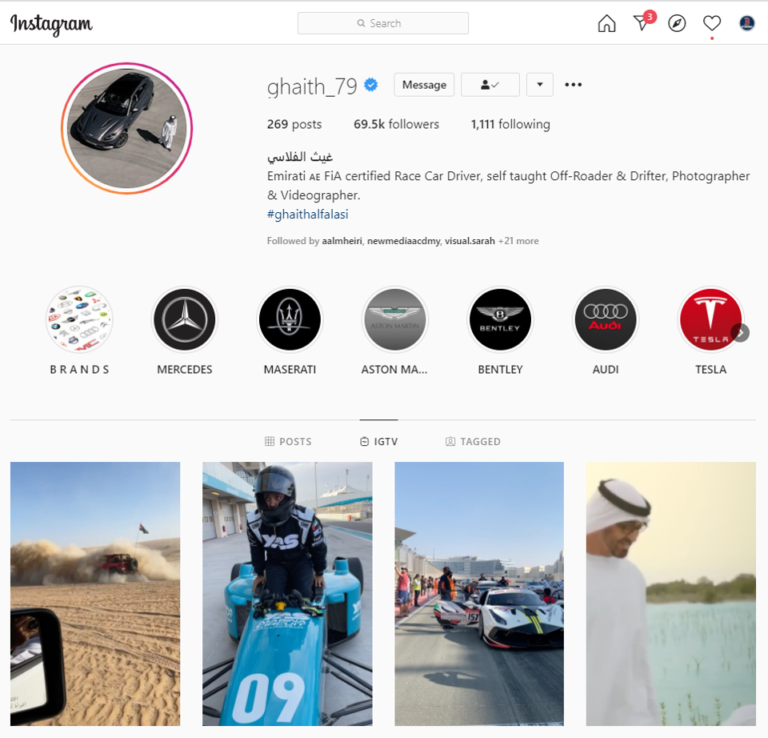
How Instagram’s Algorithm Works for Reels
Finally, Instagram rolled out Reels, a short-form video feature designed to compete against TikTok, in July 2020.
Like IGTV videos, Instagram serves suggested Reels in a new tab, as well as relevant Explore pages.
And like Instagram’s algorithm for IGTV videos, the algorithm for Reels prioritizes content from the accounts you interact with the most, as well as the type of posts you typically engage with, based on a machine learning model of what Instagram thinks you will like.
According to Dani Rodriguez (aka Dani the explorer), a freelance adventure photographer and blogger (as well as a “self-proclaimed burrito lover”), “Reels seem to get shared across more curator pages and are Instagram’s primary concern going into 2021. When they’re shared, you’re more likely to get an influx of followers. Not to mention, the Instagram algorithm loves to reward users who use their latest features.”
And according to Ms. Reichenbach, Instagram’s algorithm rewards you for posting 4-7 Reels per week.
She adds, “Please keep in mind that all of this is just Instagram’s Ideal, and Instagram does not care about your mental health and sanity!!”
Check out some of Rainylune’s Reels:

Now, take a look at some of the Reels from DJ Bliss:
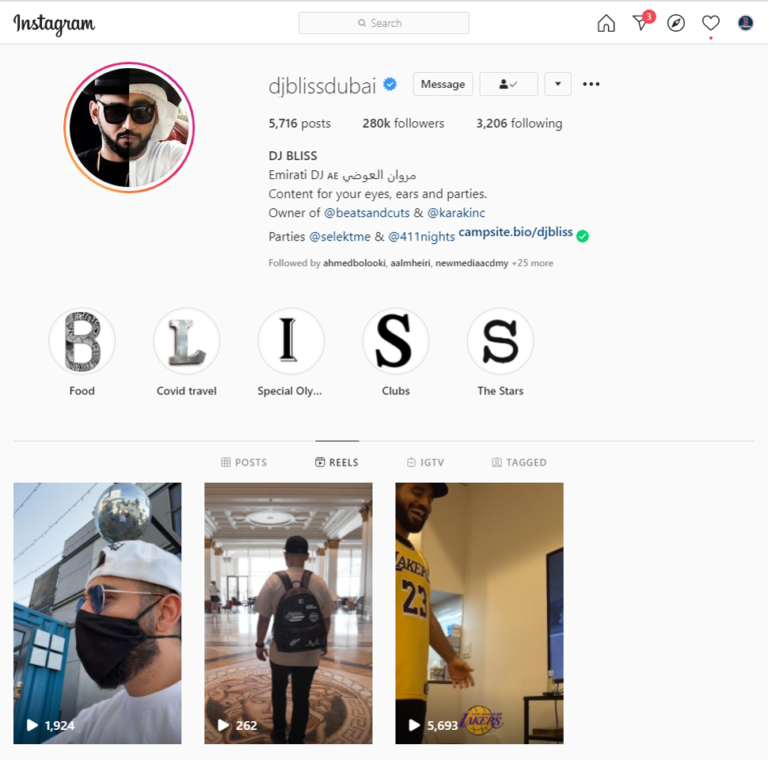
And Jim Louderback, the GM and SVP of VidCon, just let me know that Instagram has just downgraded TikTok cross-posting to Reels. He says:
“In a new ‘Tips for Getting Discovered’ post, Instagram says that videos with burned in logos will be de-emphasized in the algorithm. That same post offers tips for how to make Reels that will surprise, inspire, and delight – and hopefully get more views, too. Just a few years ago Instagram was happy for you to promote your TikTok and Musical.ly content, but that seems to have changed.”
More Feeds Require More Feeding
Ms. Reichenbach’s post has not only been read 200,000 times and generated close to 500 comments, it also caught the attention of John Herrman of The New York Times, who recently wrote an article entitled, Is There a Secret to Success on Instagram?
But, instead of examining how Instagram’s algorithm works in 2021, Herrman focused on whether the advice that Ms. Reichenbach had received was accurate.
“According to Jackson Williams, who helps oversee talent outreach and development on Instagram, the contents of Ms. Reichenbach’s post were generally accurate, as was her characterization of the meeting,” wrote Herrman.
Mr. Williams told Mr. Herrman that this isn’t a secret; in fact, it’s the same sort of thing they talk about at influencer events such as VidCon.
Mr. Williams, however, pushed back against the idea that Instagram was punishing users who didn’t engage with Reels. “There’s no penalty for not using Reels,” he said. “Broadly speaking, this is an Instagram best practices sort of thing,” he added.
Nevertheless, Mr. Williams acknowledged, that “burnout is top of mind for us” at Instagram, and that the platform tries to encourage content creators — or “partners” in the platform’s parlance — to be “intentional about the role Instagram plays in their lives.”
Asked by Mr. Herrman how he might convey this to anxious Instagrammers hungry for insider information and then disheartened when they finally hear it, Mr. Williams echoed what Ms. Reichenbach’s representative told her: “There’s no one-size-fits-all,” he said. But, he added, “Consistency is key.”
However, this actually means that Instagrammers need to consistently and frequently create interesting and engaging content that gets lots of Shares, Saves, Comments, and Likes.
Khaled Akbik, Director of Content at the New Media Academy (NMA) in the United Arab Emirates, is currently conducting a series of experiments to find out if different types of engagement have bigger impacts.
Mr. Akbik was willing to share the early results from the initial experiments for two organic Instagram posts. In an email to me, he said:
“We made sure the posts were published around the same time of the day in two consecutive days and kept everything else the same in terms of our usual publishing strategy. We created a super short video asking people to only ‘SAVE’ the post and NOT to Like, Comment, or Share it. And another video, same length, same format, asking people to ‘LIKE’ it only.”
Here are the initial results for the “Save” call-to-action (CTA):
- Reach: 5,457
- Likes: 131
- Comments: 12
- Shares: 21
- Saves: 200
Here are the initial results for the “Like” CTA:
- Reach: 2,494
- Likes: 159
- Comments: 3
- Shares: 2
- Saves: 13
Mr. Akbik said in his email, “Obviously this is a far cry from being scientific, but a little experiment that gives somewhat of an indication.” He still needs to experiment with the “Share” and “Comment” CTAs.
But, he adds, “I believe that the order of weightage when it comes to Instagram’s algorithm goes like: Share, Save, Comment, and Like.”
So, what’s the net-net? The more we learn about how Instagram’s algorithm works, the more it appears that the platform’s video best practices in 2021 require content creators – or “partners” – to spend more time feeding more Feeds.
And that isn’t easy.
More Resources:
- 30 Instagram Facts You Need to Know
- 22 Ways to Get More Instagram Followers Right Now
- Social Media Marketing: A Complete Strategy Guide
- How The LinkedIn Algorithm Works & Optimizing For It
Image Credits
All screenshots taken by author with permission, February 2021





